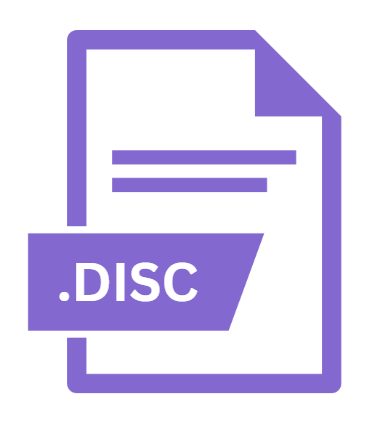.DISC File Extension

Roxio Toast Document
| Developer | Roxio |
| Popularity | |
| Category | Disk Image Files |
| Format | .DISC |
| Cross Platform | Update Soon |
What is an DISC file?
The .DISC file extension is associated with Roxio Toast, a popular disc authoring software for macOS. Specifically, .DISC files are used by Roxio Toast to manage and store disc-related projects.
This file type is integral to the process of creating, burning, and managing optical media like CDs, DVDs, and Blu-ray discs. Understanding .DISC files can be essential for users who work with Roxio Toast to produce high-quality multimedia discs.
More Information.
Roxio Toast was first released in 1990, initially serving as a CD burning software for Macintosh computers. Over the years, it evolved to support a wide range of optical media, including DVDs and Blu-ray discs.
The .DISC file extension was introduced to facilitate the management of disc projects. Before .DISC files, disc authoring required more manual organization, and project files were less integrated.
The primary purpose of the .DISC file is to store the entire project setup for a disc. This includes the layout, content, and any special configurations or settings needed to produce the final disc.
By saving all these details in a single file, users can easily manage, edit, and duplicate their projects.
Origin Of This File.
The .DISC file extension originates from Roxio Toast, a software developed by Roxio Inc. Roxio Toast has been a leading disc authoring tool for macOS since its introduction in the 1990s.
The .DISC file format was introduced to streamline and organize the disc creation process, allowing users to save their projects in a structured and manageable way.
This format is proprietary to Roxio Toast, meaning it is specifically designed to be used within this software environment.
File Structure Technical Specification.
The .DISC file is a binary file used by Roxio Toast to encapsulate all the necessary information for disc creation.
While the exact internal structure is proprietary and not publicly documented, it generally includes the following elements:
- Project Metadata: Information about the project such as the name, creation date, and any user-defined settings.
- File References: Paths and references to the actual content files that will be included on the disc.
- Layout Information: Details on how the content is organized on the disc, including file placement, menu structures, and any interactive elements.
- Burning Settings: Preferences and configurations for how the disc should be burned, including speed and format.
This structure ensures that all components of a disc project are encapsulated in one file, simplifying the management and execution of disc creation.
How to Convert the File?
Due to the proprietary nature of the .DISC file format, direct conversion to other formats is not straightforward. There are some approaches to work around this limitation:
- Using Roxio Toast: The simplest way to handle .DISC files is to use Roxio Toast itself. The software allows users to open, edit, and export projects directly, which can then be burned to discs or saved in other formats compatible with Toast.
- Exporting Projects: If you need to convert .DISC files to other formats, you might consider exporting the content from Roxio Toast into more universal formats (such as ISO images or video files). Once exported, these files can be handled by other software or systems.
- Third-Party Tools: There may be third-party tools or utilities that offer limited support for .DISC files, but these are generally less reliable and may not support all features of the format. Always ensure compatibility and reliability before using such tools.
Advantages And Disadvantages.
Advantages:
- Project Management: The .DISC file format centralizes all project data, making it easier to manage and modify disc projects. This helps prevent errors and ensures consistency across different stages of disc creation.
- Integration: Being a proprietary format for Roxio Toast, it is well-integrated with the software’s features, providing seamless functionality and enhanced user experience.
- Backup and Duplication: Users can easily save and back up their disc projects. This allows for duplication or re-burning of the same project without the need to start from scratch.
Disadvantages:
- Software Dependency: .DISC files are specifically tied to Roxio Toast, which means they are not natively supported by other disc authoring tools or operating systems. This can limit flexibility if you need to switch software.
- Proprietary Format: As a proprietary format, the exact details of the .DISC file structure are not publicly available. This can pose challenges for advanced users who want to manipulate or extract data from the file without using Roxio Toast.
- Limited Compatibility: Users who do not have access to Roxio Toast may find it difficult to work with .DISC files, potentially requiring additional software or conversion tools.
How to Open DISC?
Open In Windows
- Since .DISC files are specific to Roxio Toast, they are not natively supported on Windows. Users might need to use a macOS machine with Roxio Toast to open and manage these files. Alternatively, if the project has been exported to a more universal format (e.g., ISO), it can be handled using Windows-compatible software.
Open In Linux
- Similar to Windows, .DISC files are not natively supported on Linux. Users would need to use a macOS environment with Roxio Toast or convert the file to a compatible format before attempting to use it on Linux.
Open In MAC
- The primary method for opening .DISC files is through Roxio Toast. Simply double-clicking the file should open it in the application if it is installed on your system. You can then view, edit, and manage your disc project within the software.













